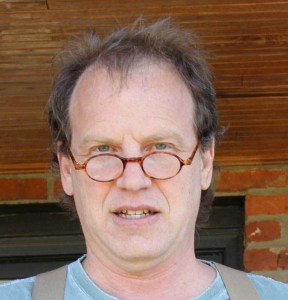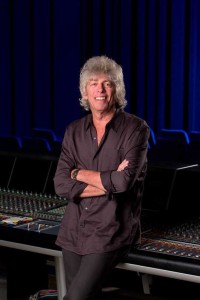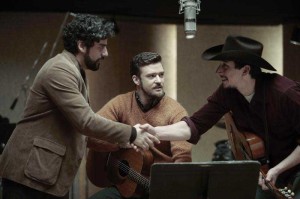
Supervising editor/re-recording mixer, Skip Lievsay, and production sound mixer, Peter Kurland, have been working with Ethan and Joel Coen since their first film. Mixer Greg Orloff joined the team on O Brother, Where Art Thou? The long-term working relationships on the brothers’ films are a major benefit to his working in the industry, according to Lievsay. “They’re my friends. We’ve been through a lot together. We’ve had good times and some bad times and we’re all the better for it. It’s really nice being with my gang. You know. Running with my pack.” Kurland agreed that the right crew was essential, “The first thing that I do on any production this major is I call the very best crew that I can, in this case Randy Johnson, the boom operator, who I knew was going to make a huge contribution to the final sound.”
The slice-of-life story follows the trials of a 1960s folk singer, making music a major component of Inside Llewyn Davis. To familiarize themselves with the music and arrangements, the production and post sound teams attended recording sessions done primarily for the album. Pre-production discussions between the directors and other key creatives arranged for the music to be recorded live on set without playback with the exception of a couple of musical numbers such as the Irish Quartet. “All of Oscar’s [Oscar Isaac] music, every bit of it, was done live for every take,” said Kurland.

Executive music producer, T-Bone Burnett, was active in planning both the recording sessions and live music recording during the production. According to Kurland, Burnett is interested in authenticity, so he was involved with the choice of microphones, particularly on-screen mics in the recording session or club scenes. “On most days when there was a lot of music, T-Bone was there,” Kurland explained. “He would listen with us to the tracks and make sure he was getting what he wanted, but generally he was very happy with that process. I think he is very comfortable with the idea that once we get into production, we have to do what is necessary to get the sound for the movie. All the preparation that he’s put into it, guides us through at that point.”
Recording dialog scenes for a period film in the middle of New York with its distinctive sounds posed a challenge. One of the issues was avoiding modern traffic sounds and jet planes. “You’d think that in the cacophony of the city that it wouldn’t matter what the noise was, but it really does,” revealed Kurland, “We worked very hard to get the proper ambiance. There were a lot of period cars in the scenes that we tried to record, so it would sound like the city would have sounded at that time.” In addition, proper preparation at various interior locations helped keep inappropriate noises from seeping in. “Where there is dialog, where there are effects that I can record on set, we do our best to capture performance, to capture mood.”
 Lievsay starts mixing while the Coens are still editing the picture, constantly refining the mix for about two months. When the picture cut is finished and sound has all the parts, they review. At this point on most films, there are major elements, such as the score, that are missing, but because of the live music recording during production, they had pretty much everything they needed for the final mix. “While they were editing picture, I could create a pretty accurate mix. It’s very close,” shared Lievsay. “That’s really nice in many ways, not the least of which is the anxiety factor is very low because we’re very tuned in to what we’re doing – what we have and also what we don’t have. That makes the process very precision like. We focused in on the things that really needed to be fixed.”
Lievsay starts mixing while the Coens are still editing the picture, constantly refining the mix for about two months. When the picture cut is finished and sound has all the parts, they review. At this point on most films, there are major elements, such as the score, that are missing, but because of the live music recording during production, they had pretty much everything they needed for the final mix. “While they were editing picture, I could create a pretty accurate mix. It’s very close,” shared Lievsay. “That’s really nice in many ways, not the least of which is the anxiety factor is very low because we’re very tuned in to what we’re doing – what we have and also what we don’t have. That makes the process very precision like. We focused in on the things that really needed to be fixed.”
Foley and new song mixes by T-Bone were added into the final mix at Sony Pictures in Los Angeles where Orloff usually works. One of the trickiest areas to mix was the road trip with its multiple location and time cuts. “I thought some of the sound cuts that Skip made in this film are some of the best that he’s done,” said Orloff. “In places where there wasn’t music, they kinda worked a score in the way that we hit cuts and came in and out of them. It was pretty brilliant, I thought.”





